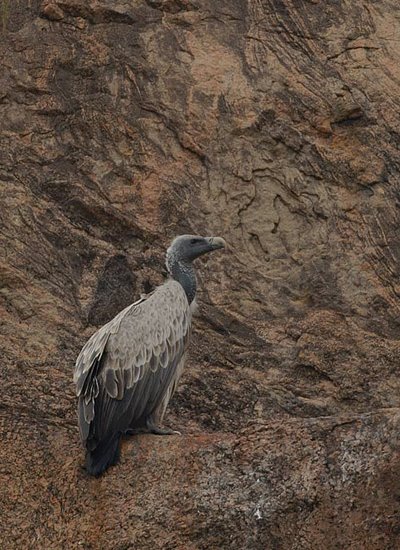|
| Query: Gyps bengalensis | Result: 27th of 27 | |
Long-billed Vulture (Gyps indicus) - Wiki
| Subject: | Long-billed Vulture (Gyps indicus) - Wiki
| |

| Resolution: 400x550
File Size: 77840 Bytes
Upload Date: 2007:10:28 19:33:47
|
Indian Vulture
From Wikipedia, the free encyclopedia
[Photo] Long-billed Vulture (Gyps indicus); Adult Indian vulture seen on the outskirts of Bangalore in Ramanagara. Photo by http://en.wikipedia.org/wiki/User:Yathin_sk | Permission is granted to copy, distribute and/or modify this document under the terms of the GNU Free Documentation License, Version 1.2 or any later version published by the Free Software Foundation; with no Invariant Sections, no Front-Cover Texts, and no Back-Cover Texts. A copy of the license is included in the section entitled "GNU Free Documentation License". |
The Indian Vulture, Gyps indicus, is an Old World vulture in the family Accipitridae, which also includes eagles, kites, buzzards and hawks. It is closely related to the European Griffon Vulture, G. fulvus. It breeds on crags or in trees in mountains in Pakistan and India, laying one egg. Birds may form loose colonies. The population is mostly resident.
The birds in the eastern part of its range, formerly considered a subspecies, have been shown to constitute a separate species, the Slender-billed Vulture Gyps tenuirostris. Previously, both were lumped together under the name Long-billed Vulture.
Like other vultures it is a scavenger, feeding mostly from carcasses of dead animals which it finds by soaring over savannah and around human habitation. They often move in flocks.
The Long-billed Vulture is a typical vulture, with a bald head, very broad wings and short tail. It is smaller and less heavily-built than European Griffon, usually weighs between 5.5 and 6.3 kg. It is distinguished from that species by its less buff body and wing coverts. It also lacks the whitish median covert bar shown by Griffon.
Diclofenac poinsoning
The Indian Vulture and the Indian White-rumped Vulture, G. bengalensis species have suffered a 99% - 97% population decrease in Pakistan & Hindustan and the cause of this has been identified as poisoning caused by the veterinary drug diclofenac. Diclofenac is a non-steroidal anti-inflammatory drug (NSAID) and when given to working animals it can reduce joint pain and so keep them working for longer. The drug is believed to be swallowed by vultures with the flesh of dead cattle which were given diclofenac in the last days of life. Diclofenac causes kidney failure in several species of Vultures. In March 2005 the Indian Government announced its support for a ban on the veterinary use of diclofenac. Another NSAID, meloxicam, has been found to be harmless to vultures and should prove to be an acceptable substitute to diclofenac. In March 2006 diclofenac was still being used for animals throughout India and the changes in Indian legislation are awaited. When meloxicam production is increased it is hoped that it will be as cheap as diclofenac.
Captive breeding programmes
Captive breeding programmes for several species of Indian vultue have been started. The vultures are long lived and slow in breeding, so the programmes are expected to take decades. Vultures reach breeding age at about 5 years old. It is hoped that captive breed birds will be released back to the wild when the environment is clear of diclofenac.
http://en.wikipedia.org/wiki/Indian_Vulture
| The text in this page is based on the copyrighted Wikipedia article shown in above URL. It is used under the GNU Free Documentation License. You may redistribute it, verbatim or modified, providing that you comply with the terms of the GFDL. |
|
Comments |
|---|
| | Guest |
|
Scientific Name: Gyps indicus (Scopoli, 1786)
Common Names: Indian Vulture, Long-billed Vulture (when lumped with G. tenuirostris)
French: Vautour indien German: Indiengeier Spanish: Buitre indio
Taxonomy: Vultur indicus Scopoli, 1786, India. |
^o^
Animal Pictures Archive for smart phones
^o^
|
|
|